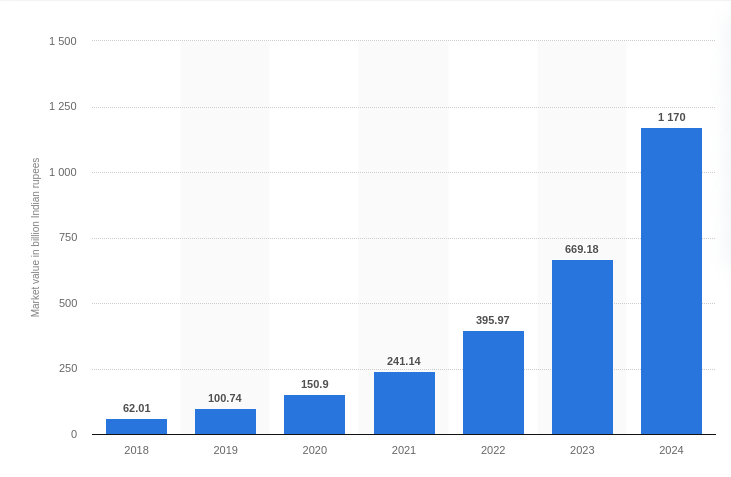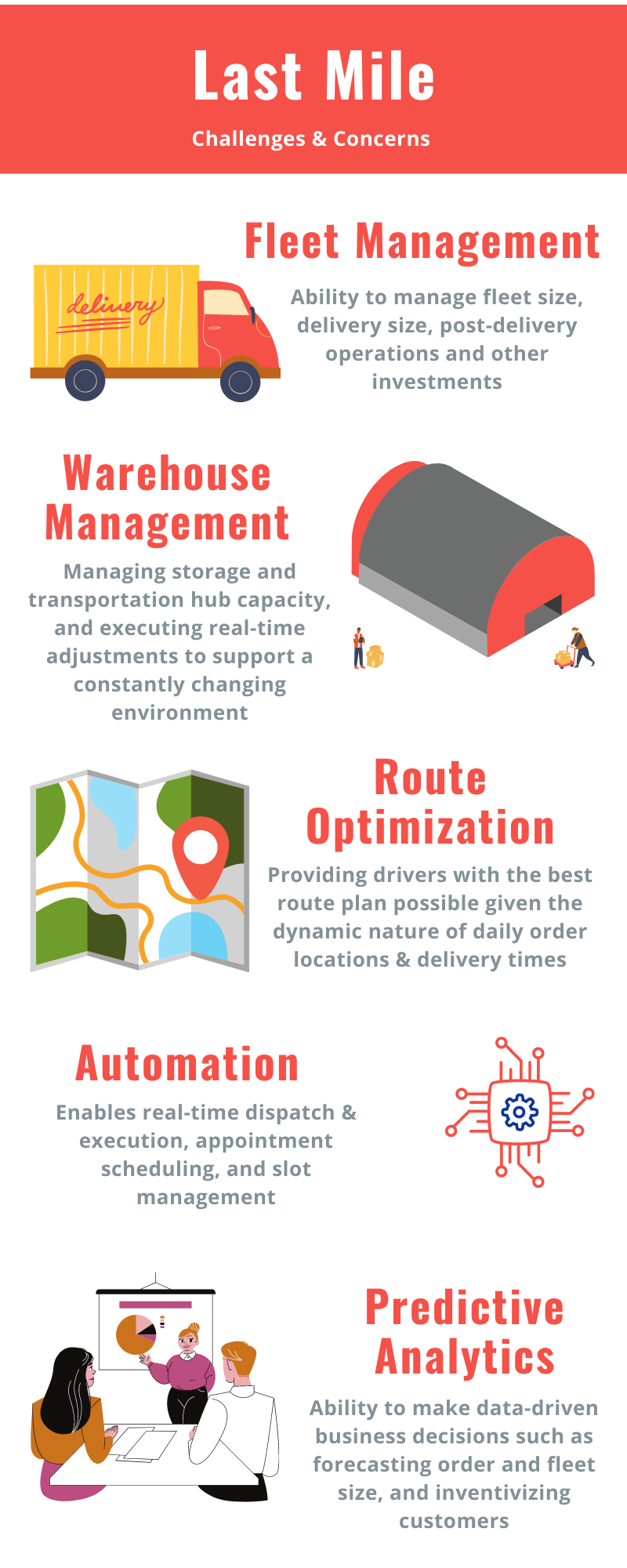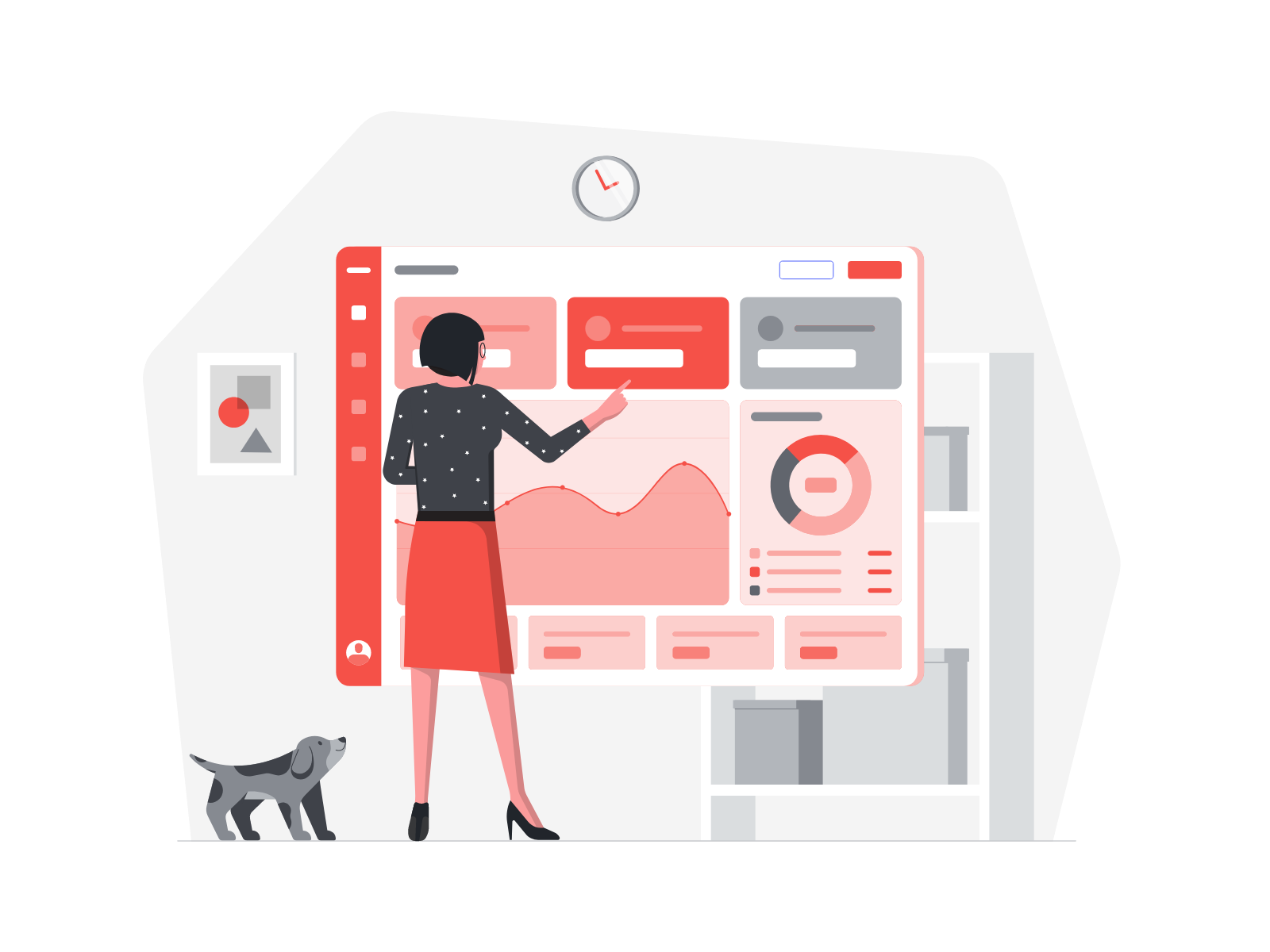
How Route Optimization improves efficiency in Last Mile Delivery
It's not just about where your product ends up, but also how it got there.
- 🗓️ Date:
- ⏱️ Time to read:
Table of Contents
In E-commerce, last mile delivery describes the journey that a certain product item takes from a retail hub or warehouse to the customer's destination. It is an extremely important subject in the world of online-shopping and e-retail, which encompasses several technological and logistical areas of interest such as goods transportation, route planning and optimization, and fleet management. The goal of analyzing and planning last-mile delivery is to improve efficiency and minimize costs in delivering a product within time to a customer.
An increasing number of people across the world prefer shopping online, and it has only increased in the more than two years since the start of COVID-19. An overwhelming amount of research indicates that people not just prefer buying products like electronics or clothing, but groceries too!
Some Stats
COVID-19 forced us all to re-think existing delivery-and-fulfillment models. Solutions like community-driven models are extremely valuable for local businesses and reduce the need for shoppers to rely on just one particular retailer. Several other retailers started to adopt the click-and-collect fulfillment model as well.
Let’s look at some stats:
- In the US, online grocery sales were at 95.8 billion USD in 2020, and is projected to reach $187.7 billion by 2024, according to data from Statista.
- But it isn’t only in the west. In emerging markets like India, online grocery sales have skyrocketed and is projected to reach ₹1,170 billion Indian rupees.

- Recent research indicates 65% of consumers would consider shopping from a different retailer if their normal grocery store didn’t provide a same-day home delivery or curbside pickup option.
Ensuring a timely delivery of goods is a cornerstone concern of last mile, which comes with a lot of technological and infrastructural challenges.
Challenges in Last Mile Delivery
Depending on where you live, the average food item on a grocery shelf might just have traveled farther than most families go on their annual vacations. When it comes to scale, last-mile delivery challenges with grocery products are something that not even the world’s largest eCommerce retail platforms were prepared for. In the year 2020, Amazon Fresh saw such a surge in demand on its platform that it had to keep customers on waitlist while it tried to figure out solutions for its delivery challenges!
Here’s an infographic that shows some of the major areas of concern in last mile

Why does static routing not scale?
In logistics, static routing algorithms refer to a single (master) plan produced for a future period based on specific factors and (an average) order set. It easy to setup, but as the organization scales, static routing introduces several new challenges.
A static routing technique leads to inefficiencies such as under-utilized trucks or infractions such as exceeding time windows or overloading trucks if the volume for the next period varies significantly. Inefficiently used equipment that lies in storage and isn’t used costs money to a company. If a company into retail and last-mile optimization is uninformed of its assets, it may be tempted to buy more, or not buy enough.
Maximizing Fleet Utility
Implementing fleet management helps the company understand how much fleet needs to be allocated for operations. It makes the difference between paying for one vehicle instead of three - which includes fuel, upkeep, storage, and operations.
Building these systems require extensive expertise on cloud native platforms, software engineering and machine learning, along with a deep domain expertise on supply-chain logistics and retail.
Using dynamic routing techniques
Dynamic routing comes in handy when the demand and volumes of orders fluctuate with time. Using these algorithms, routes that are built from the ground up, often for the next few hours or days, utilizing actual order volumes and delivery timeframes rather than static/master routes. These can even be altered in real time alterations to obtain the best match. The outcome is improved truck utilization while staying within capacity constraints and customizing fleet size and last mile for specific customers.
Real-time tracking and monitoring
Real time monitoring enables you to know where all your fleet is located, understand how warehouses are being used, and what is current warehouse capacity.
This knowledge assists you in ensuring you have the assets you require, when and where you require them. It also guarantees you have the appropriate quantity of assets on hand.
Demand prediction
Knowing where the market trends are heading is crucial for any business. This means having historical data of purchase patterns and the ability to forecast orders and sales in the near future. That way, retail companies can anticipate last-mile challenges and make the necessary fleet, warehouse, and route optimizations well in advance.
Using an omnichannel approach helps integrate multiple channels of data and software and avoids information silos. This makes it easier to organize and apply time-series analysis and forecasting methods that give insights into the market for the foreseeable future.
Case Study
At Egen, we work with some of the world’s largest food retail groups to push the boundaries of sustainable retailing. One of our largest clients, an online delivery giant in the retail space, was trailing behind competition due to its obsolete digital infrastructure. Some of the problems were:
- Relying on traditional route planning algorithms and fleet management software, which was static in nature and required manual intervention and adjustment daily.
- Lack of vehicle type/capacity management algorithm to optimize route planning.
- Unable to support same-day delivery structure.
- Slot management was an obsolete static technology almost three decades old.
- The existing technology vendor had seen limited investments/enhancements, and a robust technical support was lacking.
When customers started demanding same-day delivery, the existing infrastructure that took nearly 12 hours to process orders and 2 days to deliver orders just could not keep up. The decades-old technology was in dire need of a revamp.
What we did
The biggest bottleneck in efficiently implementing last-mile delivery was the route-planning algorithm. So that’s where we began:
A secure, dynamic, and robust routing engine
Based on predefined parameters, we replaced the legacy-routing algorithm with a highly efficient one which didn’t require manual intervention. The solution was smart enough to build optimized routes based on predefined parameters, such as number of orders at a given time interval, geolocation data, and preferred timeslots.
Security is extremely crucial and the solution needs to be SOC-2 and ISO27001 compliant. For this, we identified a 3rd party vendor with data, math, and IT security expertise to implement this routing engine using OAuth-2 security protocols.
Better user experience
We replaced all current handheld devices used by fleet drivers with a driver-mobile application.
Real-time route monitoring and updates
This enabled the system to allow for continuous routing as orders are finalized, and dynamically manage capacity and availability of fleet.
Analytics engine
Building predictive analytics capabilities enabled forecasting and decision-making on multiple frontiers of business such as fleet allocation, slot management, and manage customer expectations and operations by predicting demands.

We also introduced a cost allocation algorithm. This increased overall profits by incentivizing customers to move to less demanded days/time slots.
Scalable tech architecture
Leveraging cloud-native solutions with a micro services-based architecture which allows the system to scale with zero downtime.
The tech stack that used comprised largely of open source software. A few crucial components are enterprise software built by our in-house engineering team and partnering with 3rd party vendors.
Leveraging containerization and container orchestration technology, we were able to build a microservices-based architecture using Kubernetes, Microsoft Azure, and Apache Kafka.
Various services of the platform are loosely coupled orchestrated APIs powered by the Spring Framework, while our personalization and analytics engine use Python and Python-based libraries.
Finally, we used modern JavaScript frameworks such as React Native and VueJS for all the User Interfaces such as the Driver-mobile app and analytics dashboards. This allowed for cross-platform compatibility and rapid development.
The Impact - in a nutshell
Delivery time
Reduced from 24 hours to just 2!
Turnaround time ⏳
Dropped from 12 hours to 0.02 seconds for each order.
Connectivity
The entire network consisting of over 3000 stores were now seamlessly connected.
Along with these, the revamped platform introduced several other business-value additions, like:
- 100% visibility of in-field operations.
- Platform flexibility and agility that allowed for differentiated customer journeys, and to support new business demands.
- Omni-channel support with the integration of web, cloud, and mobile technologies.
These results were delivered through a tight-knit, 19-month partnership. Same-day deliveries followed and our client regained momentum in the delivery race.
What’s next
Visit our website to take a further look at our case studies!
Thanks for reading
If you’re into retail and in need of innovative digital solutions for your business, let’s talk! Say hello at digital@egen.solutions